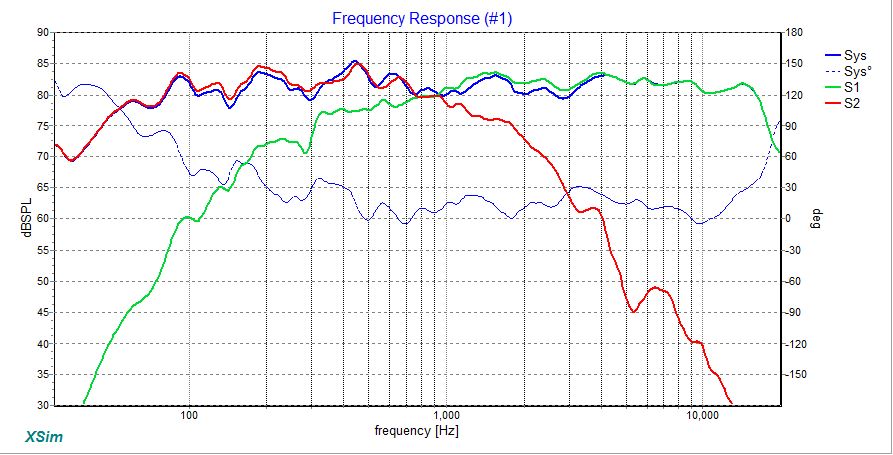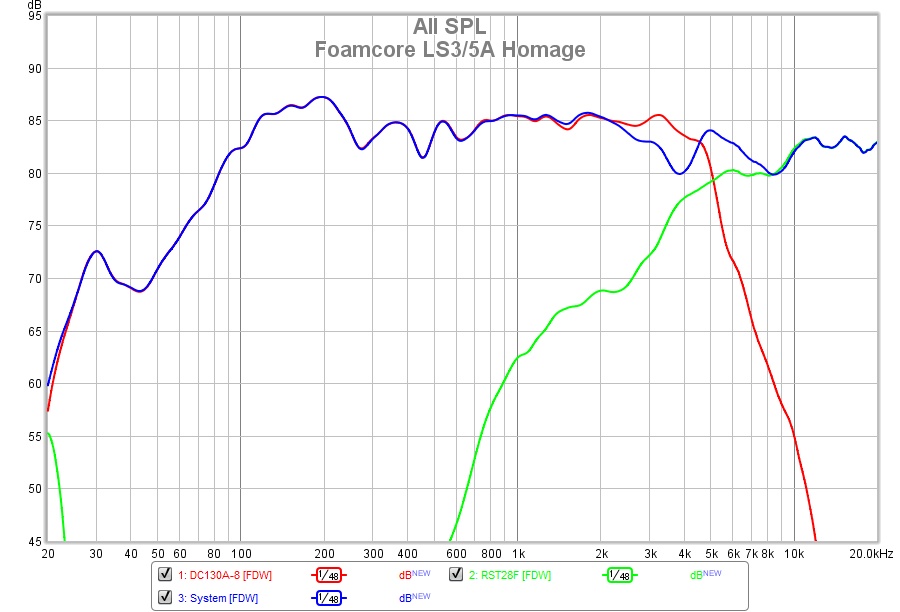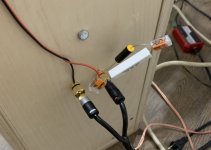We use wideband, far more than a decade.
But, true, since when does adding a supertweet 5-10khz make it a 2 or 3 way.
And i have no problem rolling in woofers to get bass to my db liking over 13' away.
Step resonse, that's important to me, thus the 6db filters i give a thumbs up.
But, true, since when does adding a supertweet 5-10khz make it a 2 or 3 way.
And i have no problem rolling in woofers to get bass to my db liking over 13' away.
Step resonse, that's important to me, thus the 6db filters i give a thumbs up.
I recall quite clearly stated from moderators in the past that all matters related to FAST/WAW belong in the Fullrange Forum. This would be in the Multi-way if perhaps the XO was some place that broke up the telephone band into 2 drivers. Especially if XO is between 1k5 to 3k5.
Last edited:
Speaking as a member, there are three criterion I use to judge whether to call something a supertweeter.
1. When switched off, the underlying system is tonally complete, and can be reasonably listened to this way.
2. Is not used to cover human voice harmonics.
3. Is beyond the delay sensitive region, where 1/4 wavelength spacing is less critical.
1. When switched off, the underlying system is tonally complete, and can be reasonably listened to this way.
2. Is not used to cover human voice harmonics.
3. Is beyond the delay sensitive region, where 1/4 wavelength spacing is less critical.
Is it ?
Much of intelligibility is helped from the letters s and t.
The uppermost harmonics of these letters is around 8khz.
Much of intelligibility is helped from the letters s and t.
The uppermost harmonics of these letters is around 8khz.
I'm not sure what you mean by "delay sensitive region", is that anything smaller than your head? 🙂
I'm talking about the way that a crossover can be more critical to various issues when done at certain frequencies, similar to the (group) delay sensitivity variations or the Fletcher-Munson curve, which also have similarities.
The question has arisen in other threads where members were trying to space a supertweeter clear of a waveguide.
The question has arisen in other threads where members were trying to space a supertweeter clear of a waveguide.
1. When switched off, the underlying system is tonally complete, and can be reasonably listened to this way.
2. Is not used to cover human voice harmonics.
3. Is beyond the delay sensitive region, where 1/4 wavelength spacing is less critical.
Thank you, AllenB for these criteria. I totally agree and in fact, like to have an on/off switch to have choice of bypassing the ST and the sound is tonally complete. The ScanSpeak 10F provides 98% of the sound and honestly, if I did not have a ST, would not miss anything. With it on, there is extra sizzle of the cymbals and high hats. But not sure if that enhanced sound is supposed to be there. There is more ambiance spaciousness to the soundstage - but probably more diffused imaging.
Member
Joined 2009
Paid Member
Attachments
xrk, I can't see the agreement. The mid is crossed around 5k, this isn't a natural rolloff on its own.
Based on the term 'super', I'd think a supertweeter is more 'added on' than 'crossed in'.
Based on the term 'super', I'd think a supertweeter is more 'added on' than 'crossed in'.
That Graph doesn't seem to match other references, which suggests a male voice goes down to 100Hz. 100Hz to 4kHz would seem to be the requirement there and the scanspeak 10F on paper seems to be a driver that would do that. Would a tweeter to infill the off axis drop be considered a 'supertweeter' in this case?
xrk, I can't see the agreement. The mid is crossed around 5k, this isn't a natural rolloff on its own.
Based on the term 'super', I'd think a supertweeter is more 'added on' than 'crossed in'.
I meant the 10F/RS225 TL with super tweeter. The small LS3/5A inspired speaker with 5.5kHz crossover is a proper tweeter but a high crossover and with the woofer capturing most of the “telephone band”. I agree you need at least up to 12khz for it to sound tonally complete. But I noticed that having a “mid woofer” covering up to 5.5kHz seems to give a very natural and coherent presentation that reminded me of why I like fullrange drivers.
Hi AllenB,
Here is the speaker I am referring to that I am saying it has a super tweeter.
10F/8424 & RS225-8 FAST / WAW Ref Monitor
Here is its response with the SS 10F crossed 1st order at 900Hz and goes up to circa 16kHz.

The small DC130A with RST28F is not a super tweeter:

Here is the speaker I am referring to that I am saying it has a super tweeter.
10F/8424 & RS225-8 FAST / WAW Ref Monitor
Here is its response with the SS 10F crossed 1st order at 900Hz and goes up to circa 16kHz.
The small DC130A with RST28F is not a super tweeter:
This is what I think of, when I read about a super tweeter:
Super tweeter - Wikipedia
So that would mean you bring that tweeter in, above the 10F crossed high without a filter on the 10F?
Super tweeter - Wikipedia
A super tweeter is a speaker driver intended to produce ultra high frequencies in a multi-driver loudspeaker system. Its purpose is to recreate a more realistic sound field, often characterized as "airy-ness". Super tweeters are sometimes found in high fidelity speaker systems and sometimes even in home theater systems. They are used to supplement the sound of tweeters by reproducing frequencies which the tweeter may produce only with a narrow polar output, or perhaps with distortion.
A super tweeter is generally intended to respond well into ultrasonic frequencies over 20 kHz, the commonly accepted upper frequency limit of human hearing. Super tweeters have been designed for psychoacoustic testing, for extended-range digital audio such as Super Audio CD intended for audiophiles, for biologists performing research on animal response to sounds, and for ambient sound systems in zoos. Ribbon tweeters have been made that can reproduce 80 kHz[1] and even 100 kHz.[2]
So that would mean you bring that tweeter in, above the 10F crossed high without a filter on the 10F?
Last edited:
I have also played a lot with sTs, they sometimes work, sometimes not.
Have you any ideas what determines whether they work or not?
So that would mean you bring that tweeter in, above the 10F crossed high without a filter on the 10F?
That’s right, the 10F runs to its upper end full range. Only filter is the high pass crossover with the woofer near 900Hz (1st order).
I have the played with the ND25FA-4 tweeter with a single 1uF cap as a high pass. I used 4.7ohm series resistor to attenuate the level to match the 10F better.
Attachments
Last edited:
Have you any ideas what determines whether they work or not?
Move around and the top end changes. More than without.
dave
I see, so "sometimes not" is when you are moving around? I thought you meant something about the way they were implemented.
Well it is caused by the implementation. Tweeter & Wideband separated by much greater than 1/4 wavelength spacing between drivers.\
dave
dave
- Home
- Loudspeakers
- Full Range
- FAST or STAFT (WAW or STAW) Which is Better?

